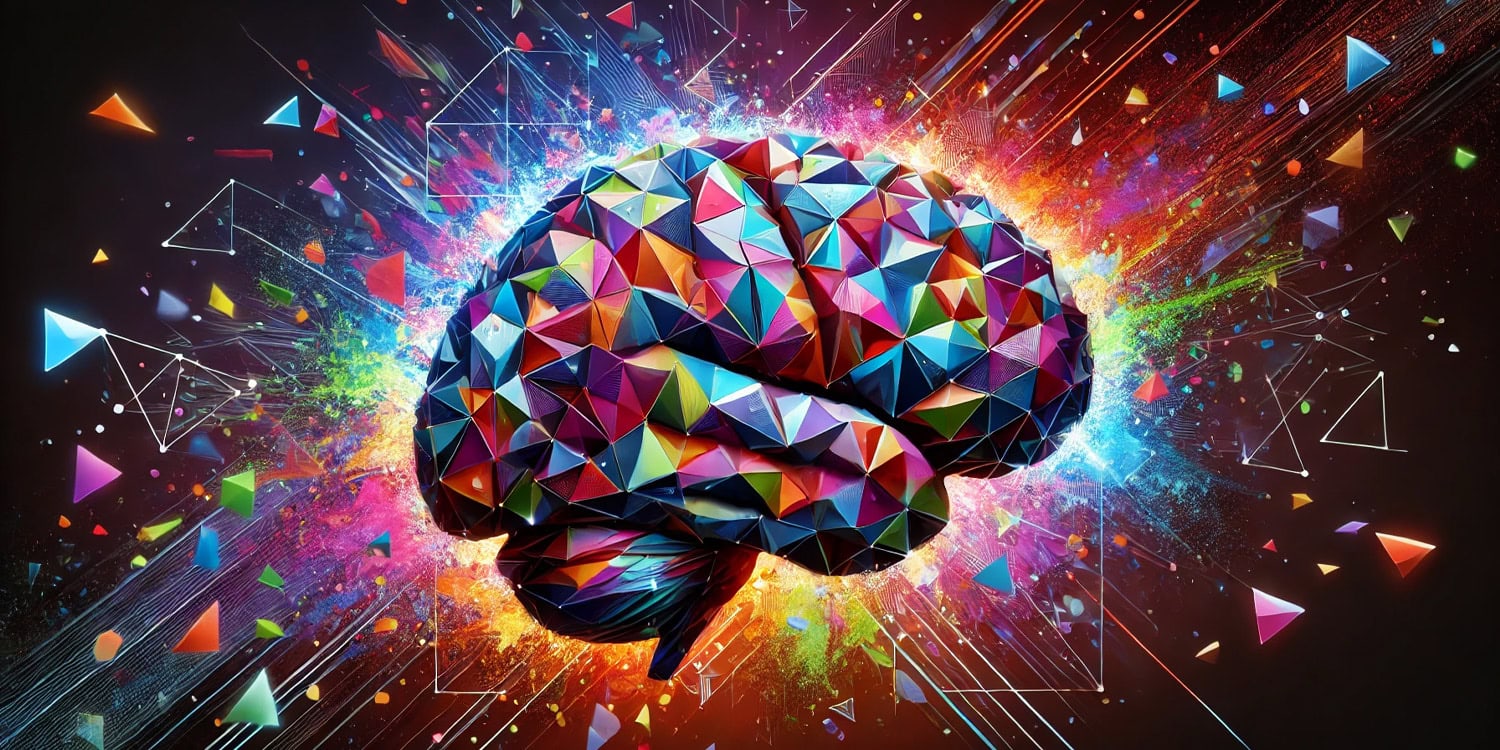A new study published in Psychological Medicine sheds light on how childhood adversities, such as abuse and neglect, can affect brain development, even in children who do not show signs of psychiatric disorders. Researchers analyzed brain scans of nearly 1,000 young people and found that those who experienced higher levels of adversity had distinct patterns of brain activity, particularly in regions involved in self-reflection and emotional processing.
The brain undergoes significant development during childhood, adolescence, and young adulthood. While many factors contribute to brain growth, negative experiences, such as abuse, neglect, and exposure to adversity, can disrupt typical development and increase the risk of mental health issues later in life. However, there is still limited understanding of how early life adversity affects brain architecture, especially in individuals who do not have diagnosed psychiatric conditions.
The goal of this study was to investigate whether it was possible to identify patterns of atypical brain development in a large, population-based sample of otherwise healthy children and young people. By focusing on resting-state brain activity, the researchers sought to pinpoint neural signatures that distinguish typical from atypical development and explore how these brain patterns are associated with adversity.
“Children go through a myriad of factors during the developmental stage. We do not know which factor has maximal impact on the brain and can tip the balance from healthy to unhealthy development,” said study author Rajan Kashyap, an assistant professor (Ramalingaswami Fellow), at the National Institute of Mental Health and Neurosciences in India
The study was based on resting-state functional MRI (fMRI) data from a subsample of 987 participants from the Consortium on Vulnerability to Externalizing Disorders and Addictions (cVEDA) cohort, which overall includes nearly 9,000 children, adolescents, and young adults aged 6 to 23 years. This cohort represents a diverse population from different regions of India, many of whom were exposed to various forms of adversity, including abuse, neglect, and socioeconomic challenges.
The researchers applied a technique known as dynamic mode decomposition (DMD) to these brain scans. This method helps to analyze complex, time-varying brain activity by breaking it down into distinct dynamic modes (DMs), which reflect patterns of neural activity.
“The work uses AI-based techniques to understand the mental health in the brain data of a larger population,” Kashyap said. “Without AI, such understanding from data is impossible.”
Using the DMD technique, the researchers classified the participants into two groups based on their brain activity patterns. One group, which consisted of 809 participants, had relatively homogeneous brain activity patterns, which were considered typical of healthy neurodevelopment. The other group, comprising 178 participants, had more heterogeneous or atypical brain activity patterns, indicating potential deviations from typical development.
The atypical group showed distinct differences in brain activity within the default mode network, particularly in regions located in the frontal, parietal, and temporal lobes. These areas are known to be involved in higher-order cognitive functions, such as decision-making, emotional regulation, and social interactions.
After classifying the participants based on their brain activity patterns, the researchers compared a wide range of measures between the two groups. The researchers did not initially assume which behavioral traits would differ between the groups. Instead, the researchers compared a wide range of factors, including socioeconomic status, cognitive abilities, psychopathology, and measures of adversity, such as abuse and neglect. They then examined how these factors correlated with brain activity patterns across different age groups.
The study’s most significant finding was that participants in the atypical brain activity group had experienced significantly higher levels of adversity compared to those in the typical group. Specifically, the participants in the atypical group were more likely to have been exposed to abuse and neglect during childhood. Abuse, in particular, emerged as the strongest factor associated with atypical brain development.
“A kid’s home is the temple for his/her brain’s development,” Kashyap told PsyPost. “Abuse and neglect at home can alter the functional architecture of the brain.”
Despite these differences in exposure to adversity, there were no significant differences in cognitive performance between the two groups. This suggests that while early life adversity can alter brain development, it may not immediately manifest in measurable cognitive impairments. However, the researchers noted that the long-term effects of these brain alterations on mental health and cognition might become more apparent later in life.
Interestingly, the study found that the relationship between adversity and brain activity varied depending on the age of the participants. Among children in the atypical group, disruptions were most prominent in the parietal regions of the brain, which are involved in processing sensory information and spatial awareness. In adolescents, the disruptions shifted to the frontal regions, which are responsible for executive functions such as planning and impulse control.
By young adulthood, the disruptions were found in both the parietal and temporal regions, the latter of which plays a critical role in memory and emotion processing. This age-dependent shift suggests that the brain’s response to adversity may evolve as children grow and develop.
In contrast, the typical group exhibited a stable pattern of brain activity across all age groups, with consistent activation in default mode network regions. This consistency reflects a typical developmental trajectory where the brain matures in a predictable manner, without significant disruptions caused by external factors such as adversity.
“Our sample consists of a population (6-23 years) from rich, middle, and poor socioeconomic backgrounds,” Kashyap said. “The participants had varying levels of education, with some receiving good education while others had little to no education. Some participants came from areas affected by terrorism, and some had parents who suffered from neuropsychiatric disorders. The findings suggest that, regardless of where a child grows up, the home environment matters the most.”
But the study, like all research, has limitations. The data were collected at a single point in time, meaning the researchers could not track how brain patterns changed over time or establish a direct cause-and-effect relationship between adversity and brain development. Longitudinal studies, where participants are followed over several years, would provide a more detailed understanding of how childhood adversity affects brain development and how these effects might evolve into adulthood.
Another limitation is that the study focused on a relatively healthy population without diagnosed psychiatric conditions. As a result, it is unclear how these brain patterns might relate to clinical mental health issues that emerge later in life. Future research should explore whether individuals with atypical brain development are at higher risk for developing mental health disorders, such as anxiety or depression, and whether interventions targeting early life adversity could mitigate these risks.
“I primarily work on understanding the trajectory of brain ageing from birth to death,” Kashyap said. “In our previous work using Human Connectome Project data (25-90 years), we found that substance use as well as higher rates of smoking and drinking alter the functional architecture of the brain and can make you vulnerable to neuropsychiatric problems. The work became the cover-page of the Human Brain Mapping journal.”
“With this current work, we find that the root for altered brain signatures start from childhood — particularly a person’s environment at home. Longitudinal analysis of population-based brain data can help us to understand the tipping point at which neuropsychiatric disorders can start and the ways we can adopt to stay healthy.”
The study, “Childhood adversities characterize the heterogeneity in the brain pattern of individuals during neurodevelopment,” was authored by Rajan Kashyap, Bharath Holla, Sagarika Bhattacharjee, Eesha Sharma, Urvakhsh Meherwan Mehta, Nilakshi Vaidya, Rose Dawn Bharath, Pratima Murthy, Debashish Basu, Subodh Bhagyalakshmi Nanjayya, Rajkumar Lenin Singh, Roshan Lourembam, Amit Chakrabarti, Kamakshi Kartik, Kartik Kalyanram, Kalyanaraman Kumaran, Ghattu Krishnaveni, Murali Krishna, Rebecca Kuriyan, Sunita Simon Kurpad, Sylvane Desrivieres, Meera Purushottam, Gareth Barker, Dimitri Papadopoulos Orfanos, Matthew Hickman, Jon Heron, Mireille Toledano, Gunter Schumann, Vivek Benegal, and the Consortium on Vulnerability to Externalizing Disorders and Addictions (cVEDA).




